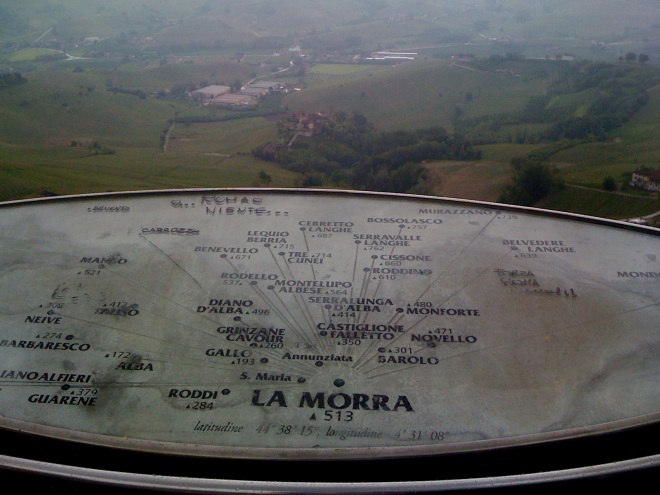
Nebbiolo Prima, the reconstituted annual anteprima event formerly known as the Alba Wines Exhibition, is easily one of the most engaging Italian wine tastings that I’ve attended. It’s also certainly the most gruesome: four days, 75-85 new nebbiolo wines each day, and only three or so hours in a single sitting to taste them all. Still, it’s a fantastic opportunity to taste most of the new releases from the following appellations: Roero, Barbaresco and Barolo. And as an invited (and hosted*) journalist, I got to taste everything blind, broken out by vintage and commune.
I’m still typing up my notes, so it’s a little premature to comment on individual wines. Actually, typed notes or no, I think it’s impossible to offer accurate impressions of the 330 or so wines tasted at Nebbiolo Prima. To be sure, I had some favorites — wines that, to me at least, gave a balanced impression of how nebbiolo performs in a particular zone, whether the Roero, Nieve, or Castiglione Falletto.

Large, comprehensive tastings like Nebbiolo Prima, however, do have their advantages, namely providing an opportunity to play generalist and look for underlying trends or profiles within communes and, most importantly, within the vintage.
So speaking generally, I came away from this tasting uninspired by many of the ’07s from the Roero (a region that I tend to like under normal circumstances) and frustrated by the bulk (literally and figuratively, but not all) of ’07 Barbarescos, especially those from Treiso which, marked as they were by jammy tannins and high alcohols, didn’t seem to handle the warm, dry conditions of 2007.


(Above: Two sides to every tasting, and every rental car. I had rented a new – and adorable – Fiat 500 to make getting around much easier. Unfortunately a tight alleyway and an obscured bench in the medieval town of Serralunga decided to make things a little more difficult. Thankfully, a quick thinking winemaker reattached the bumper with tape.)
Barolo 2006 was a different matter. And at least to judge from my experiences during both Nebbiolo Prima and during visits with several producers both before, during and after the event, 2006 is looking like it will be a very good, possibly classic, vintage for Barolo, especially among producers in Castiglione Falletto, Barolo/Novello, Monforte, Serralunga and Verduno. La Morra was the odd man out here, with too many wines that felt pushed in the cellar, whether through overworked tannins or excessive oak flavors.
Which brings up another point about 2006, and perhaps why I think this vintage shows real promise for Barolo: it’s a tough year to hide behind. In other words, it’s not a year in which warm, ideal ripening conditions can hide bad winemaking, nor is it a year in which the more obviously modern and international styles tended to show their best. If you dig brighter acidity, earthy, firm tannins and purity of expression over technique, then 2006 Barolo is your thing.
A few more posts, including some producer visits in Liguria and Valtellina in addition to Piedmont, to follow…
NB: I had the great pleasure of spending a good amount of time tasting (and eating) with David McDuff, who has also posted informed observations about Nebbiolo Prima. Definitely worth a visit.
*As noted before, but worth pointing out again, I was an invited journalist at Nebbiolo Prima, and have the organizers to thank for logistical support, airfare, some meals, etc. The rental car, in all its taped, bashed-up glory, was my own responsibility.
















